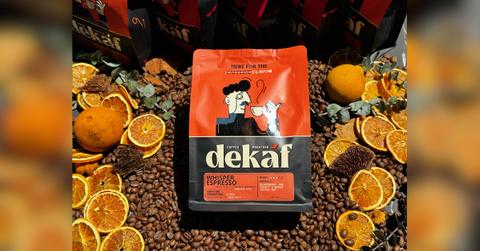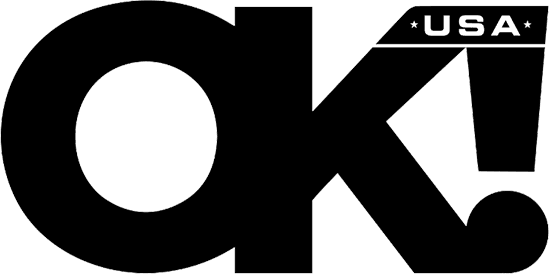 NEWS
NEWSFrom All-Caf to Half-Caf: How Dekáf Is Giving Coffee Drinkers Their Control Back

Oct. 27 2025, Published 1:49 a.m. ET
A few years ago, taking caffeine out of coffee sounded like taking the heart out of the ritual itself. The industry treated caffeine as nonnegotiable, and anyone asking for decaf was met with compromise: thin flavors, lower standards, and little choice. But in Salem, Massachusetts, two founders believed coffee drinkers deserved more say in what powered their day. Anil Mezini and Khanh Nguyen built Dekáf Coffee Roasters from the ground up to prove that great coffee does not have to come with a caffeine cost.
Dekáf was never about following trends or taking shortcuts. It grew through persistence, careful sourcing, and thousands of roast trials. What emerged is a collection of decaf and low-caffeine coffees crafted with the same precision and pride as any specialty roast. From the beginning, Dekáf’s goal has been to give coffee drinkers real freedom of choice: full flavor, balanced energy, and coffee on their own terms.
Redefining the Daily Brew
Coffee has long been celebrated as the lifeblood of productivity. For many, it marks the start of the day, fuels mid-afternoon focus, and sometimes stretches late into the night. Yet as wellness awareness grows, that same ritual is being looked at differently. More drinkers are asking whether the energy they get is worth the jitters, disrupted sleep, and anxiety that can follow.
Dekáf Coffee Roasters was founded with those very questions in mind. Based in Salem, Massachusetts, co-founders Anil Mezini and Khanh Nguyen wanted to prove that coffee could deliver depth and satisfaction without the side effects. They built Dekáf with their own hands, taking on a challenge few roasters were willing to face: creating decaf and low-caffeine coffees that tasted every bit as complex as their fully caffeinated counterparts.
“When we started,” Khanh recalls, “we were the roasters, the packers, the designers, and the delivery team. Every part of Dekáf came through our own labor. That mattered. It still does.”
Their early efforts were anything but simple. Each batch required precision, from sourcing specialty-grade beans to developing roast profiles on equipment dedicated entirely to caffeine-conscious coffees. The Ghibli R15 was used exclusively for decaf, while the Loring Kestrel handled low-caf roasts. The Ikawa Pro100 allowed them to test and refine every origin until it met their standard.
A Shift Toward Mindful Stimulation
Once seen as coffee’s defining feature, caffeine is now being questioned. Consumers are rethinking how much they need—and how it affects their focus, mood, and rest. Health research continues to link excessive caffeine intake to higher stress levels, insomnia, and digestive discomfort. That awareness has pushed younger consumers, especially those involved in wellness and mindfulness movements, to look for new ways to enjoy their brew.
Quarter-caf and half-caf blends have emerged as part of that change, offering full flavor with a lighter impact. Dekáf’s mission fits naturally within this shift.
“Growth only works if your foundation holds,” Anil says. “We did not want to be a brand people liked for one product. We wanted to be a company they could follow for years.”
That approach shaped their expansion: steady, transparent, and anchored in craftsmanship rather than speed.
Want OK! each day? Sign up here!
Quality Without Compromise
When Dekáf launched, decaf carried a reputation for being inferior—a compromise rather than a choice. Many roasters avoided it altogether, citing low demand and muted taste. Anil saw that perception as an opportunity to prove otherwise.
Most commercial decaf coffees were processed with chemicals and roasted with minimal attention to detail. Dekáf chose a different route, partnering with processors that use gentle, chemical-free decaffeination methods and applying roasting precision that treats every batch as a premium product.
“It was about showing that the only thing missing was caffeine,” Anil explains. “Everything else—flavor, body, aroma—had to be there.”
The company’s catalog now includes more than 15 options across origins and roast levels. Customers can choose from fully decaffeinated to half-caf blends, tailoring their energy intake without losing taste. That variety has helped redefine what decaf can be.
Reclaiming the Coffee Routine
Dekáf’s story is as much about empowerment as it is about innovation. The founders wanted to return choice to a ritual that had become automatic. By challenging the all-or-nothing mindset around caffeine, they gave coffee drinkers a way to stay alert without overdoing it.
“We never set out to create a trend,” Khanh says. “We wanted to make coffee that could fit every lifestyle. Some people want their morning boost, others want calm focus through the day. We just made that choice possible.”
That message resonates with a generation rethinking its relationship with stimulation. As nonalcoholic spirits and functional beverages gain popularity, low-caffeine coffee offers a familiar yet thoughtful alternative. Dekáf’s quarter-caf and half-caf lines deliver steady energy that lasts, creating what Anil describes as “a more sustainable kind of energy.”
The Future of Coffee, Rebalanced
Dekáf’s next chapter centers on growth without compromise. The team is expanding its Mizudashi cold brew series, exploring retail collaborations, and continuing educational outreach to help consumers understand how decaffeination works and why it matters. For Anil and Khanh, each new offering is another step toward reshaping the way people think about coffee.
“Decaf deserves better,” Khanh says. “It deserves its own story, its own lane, and its own level of craft. That is what we are building.”
Dekáf stands apart in a market that often equates strength with excess. Its rise shows that coffee can still inspire without pushing limits, serving as a reminder that energy and calm can share the same cup.

